 |
 |
 |
| |
Changes in Bone Mass after Discontinuation of PrEP with Tenofovir Disoproxil Fumarate/Emtricitabine (TDF/FTC) in Young Men Who Have Sex with Men (YMSM): Extension Phase Results of Adolescent Trials Network (ATN) Study 110
|
| |
| |
Reported by Jules Levin
Durban 2016 July 18-22
Mulligan K, Hosek S, Kapogiannis BG, Landovitz RJ, Liu N, Cofield SS, Perumean-Chaney SE, Rutledge B, Havens PL, Wilson CM, for the ATN 110 Study Team


Abstract
Background: PrEP with TDF/FTC is associated with modest bone loss in HIV-seronegative adults and adolescents. There is particular concern about bone loss during adolescence/early adulthood, a period of continuing bone growth. The aim of this study was to determine whether bone loss reversed with discontinuation of PrEP in HIV-seronegative YMSM ages 18-22.
Methods: ATN110 is a 48-week open-label demonstration and safety study of TDF/FTC PrEP in 200 YMSM. As part of safety monitoring, bone mineral density (BMD) was measured by dual-energy X-ray absorptiometry (DXA). Participants who lost or failed to accrue bone after 48 weeks on TDF/FTC PrEP immediately entered an extension phase (EPH) in which DXA scanning was performed 24 and 48 weeks after discontinuation of PrEP. Results are mean±SD.
Results: Of 135 participants who had DXA scans at the end of the 48-week TDF/FTC treatment phase, 105 (78%) were eligible for EPH. After exclusion of seroconverters (N=6) and those who received PrEP through their regular providers (N=16), EPH data are available for 74 participants.
Among this group, average BMD changes from baseline to week 48 of the treatment phase were: spine -0.2±2.7% (P=0.53); hip -1.4±3.6% (P=0.002); whole body (WB) -0.6±2.5% (P=0.03). Forty-eight weeks after discontinuation of TDF/FTC, BMD increased (spine +1.1±3.0% [P=0.003]; hip +1.0±3.8% [P=0.04]; WB +0.6±2.0% [P=0.01]). Net BMD changes from baseline to the end of EPH (48 weeks on TDF/FTC followed by 48 weeks off TDF/FTC) were not statistically significant (spine +0.6±4.1% [P=0.24]; hip -0.5±4.2% [P=0.34]; WB -0.2±2.6% [P=0.52]). Despite gains in BMD during EPH, there were small but statistically significant net decreases from baseline in Z-scores (SDs based on population norms for BMD) in the spine (-0.18±0.38 [P< 0.001]) and WB (-0.08±0.31 [P=0.03]), with no significant change in the hip (-0.05±0.30 [P=0.22]).
Conclusions: On average, HIV-seronegative YMSM who lost BMD during TDF/FTC PrEP experienced partial or full recovery of BMD during the 48 weeks following discontinuation of PrEP, but some Z-scores declined slightly from baseline. While the risk of slight BMD loss is counterbalanced by protection from HIV acquisition, these results highlight the continuing need for strategies to mitigate bone loss in at-risk YMSM.
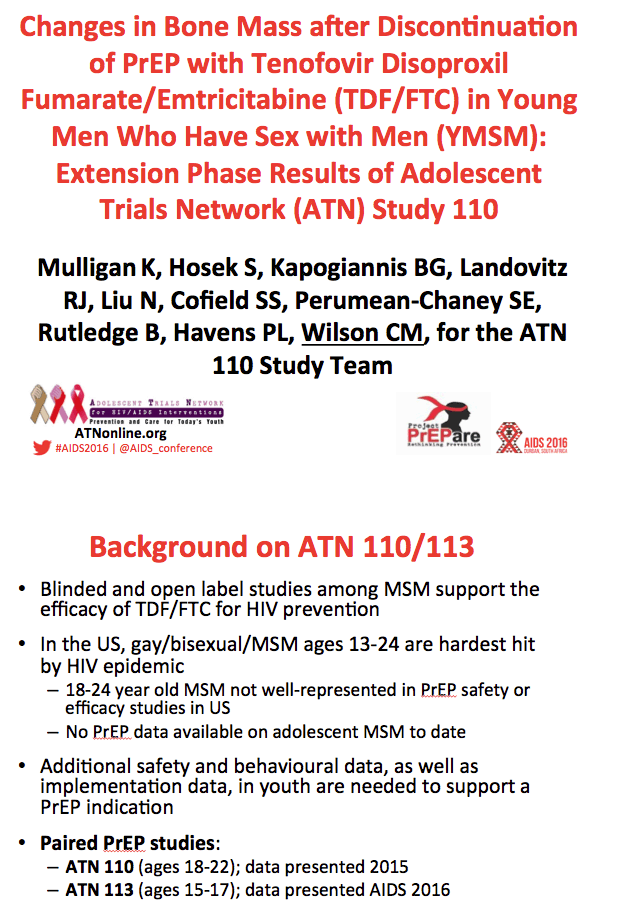
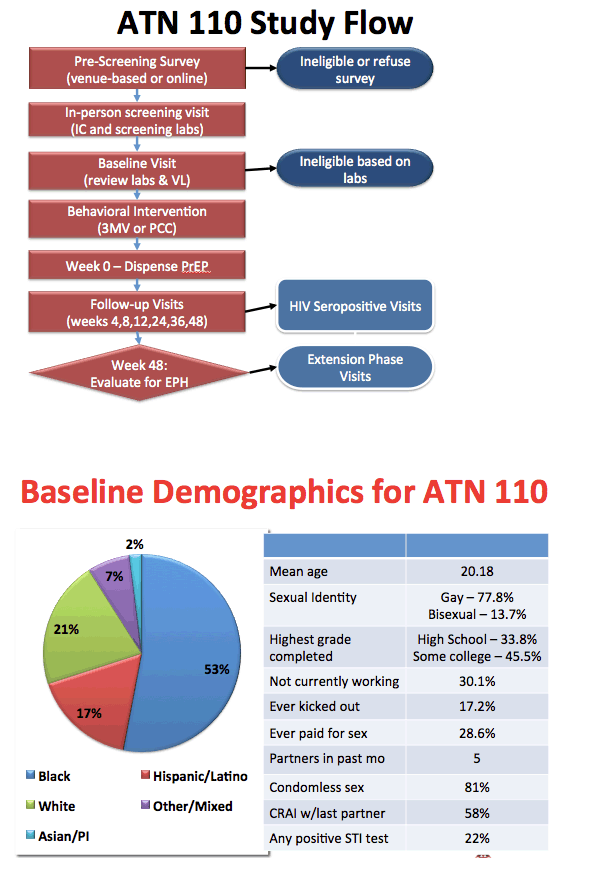
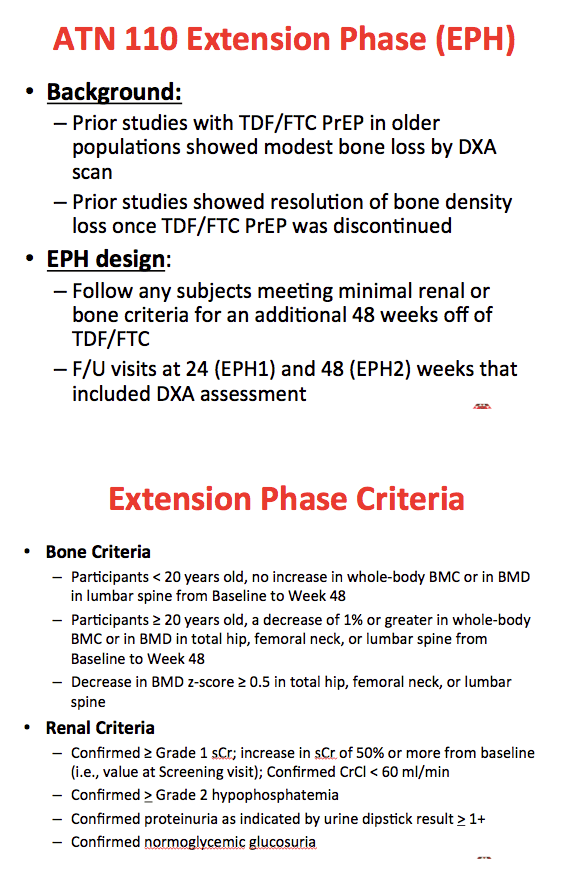
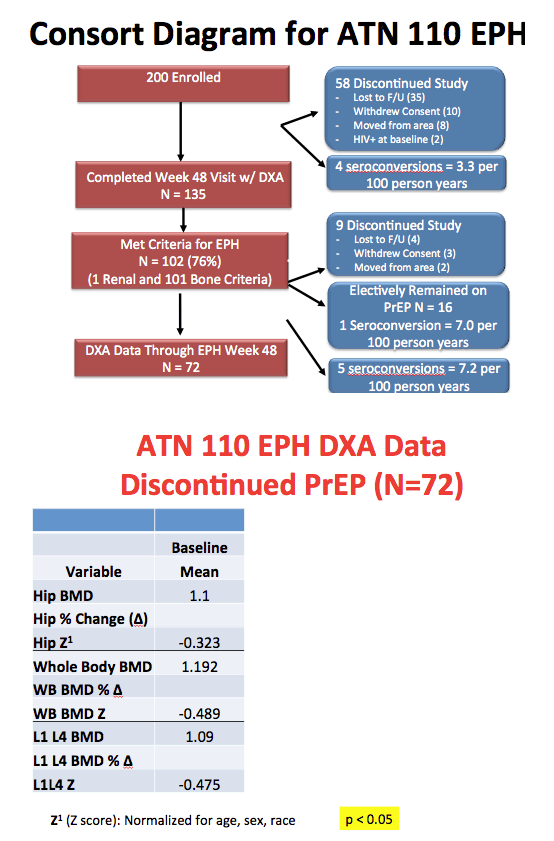
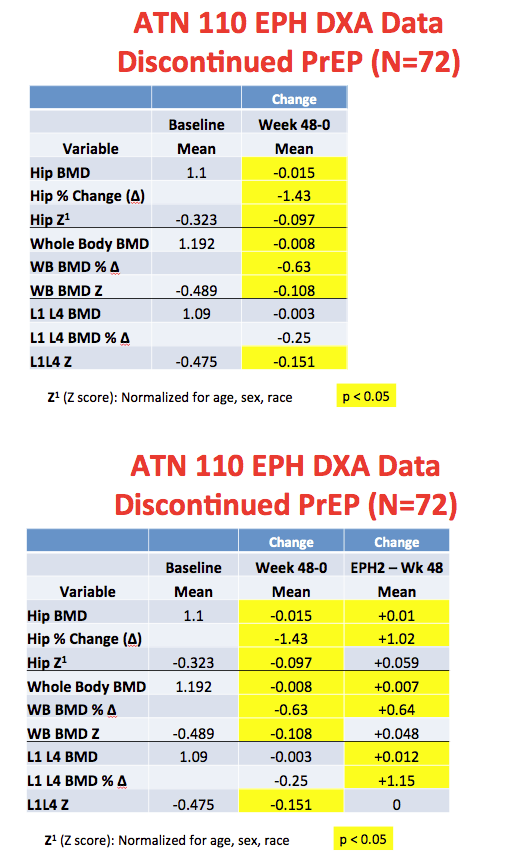
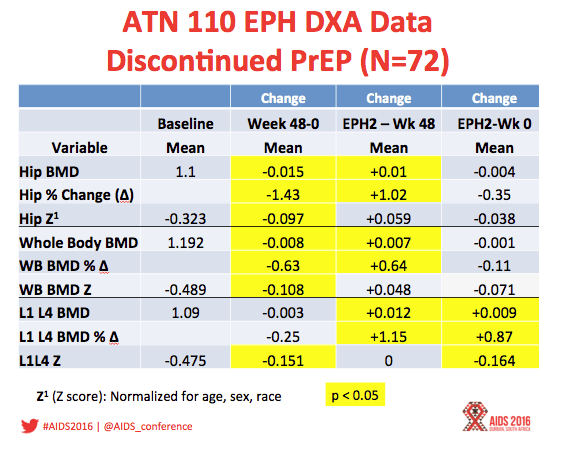
Main points of full table : 1) As previously seen, there was evidence of impact on bone density while the participants were exposed to TDF/FTC and the % changes were similar to those seen in older populations; 2) All of the changes noted by DXA between Week 48 and the EPH2 visits were in a positive direction; 3) comparing EPH2 DXA to baseline, there is near normalization or recovery from TFV/FTC impact.
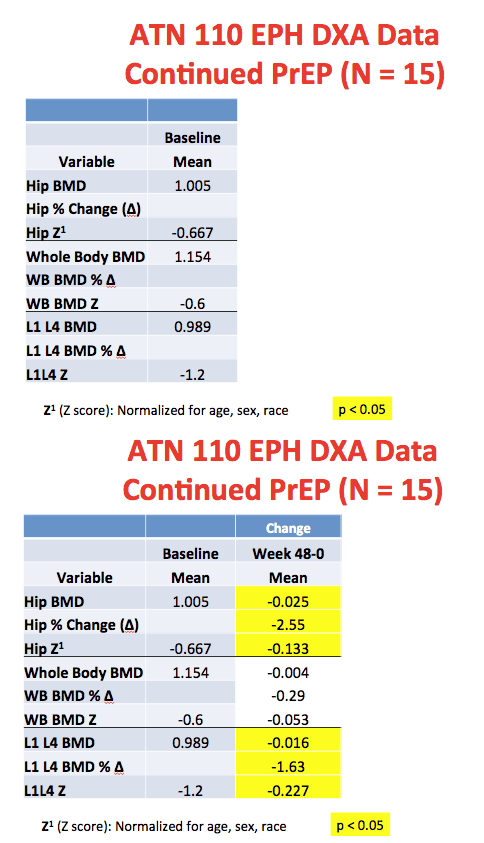
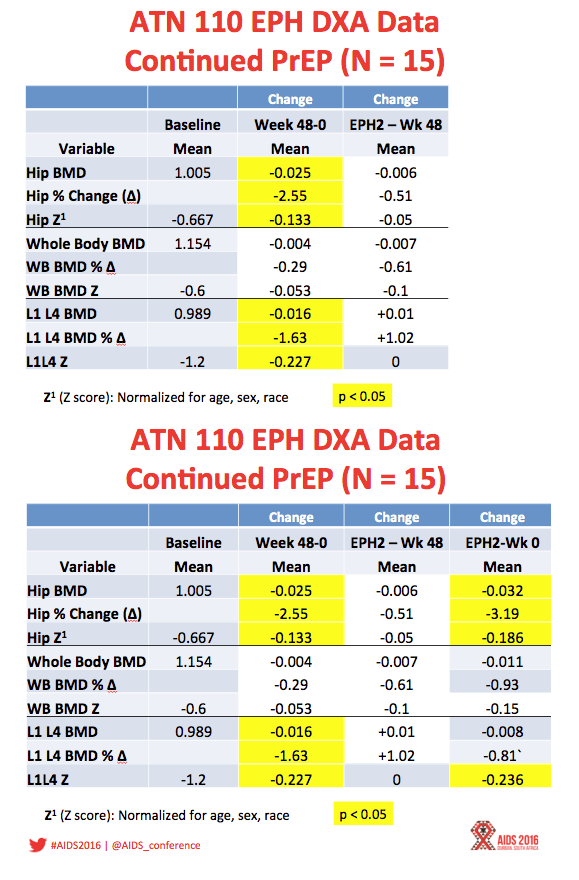
As noted there were 15 subjects who met criteria for EPH but elected to voluntarily remain on PrEP. Points: 1) Impact on bone density again seen when comparing Week 48 to baseline measurements; 2) comparing EPH2 measurements to 48 weeks, positive bone density changes seen in the population discontinuing PrEP were not seen but no statistically different changes were seen; 3) thus there were differences in DXA measurement between the EPH2 visit and baseline assessments but stated another way, the impact of TFV/FTC occurred in the first 48 weeks but then plateaued as has been seen in older populations. Caveat is small N
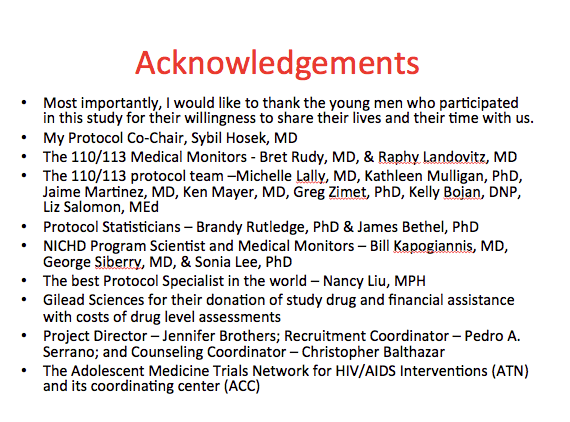
|
| |
|
 |
 |
|
|